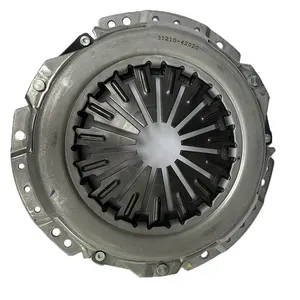
Hot Selling Cement Pressure Plate Material High Temperature Resistance Sepiolite For Sale Sepiolite Fiber Powder


Truck 3482000464 Parts Model 395 Clutch Pressure Plate Cover For Heavy Duty Truck Transmission























The pressure plate is an integral component of a vehicle's transmission system, playing a pivotal role in the engagement and disengagement of the clutch. This mechanical device, which is part of the clutch assembly, exerts pressure on the clutch disc, binding it to the engine's flywheel, thereby transmitting power from the engine to the drivetrain. The efficiency of a pressure plate directly influences the vehicle's performance, making it essential for smooth gear transitions and reliable operation.
There are various types of pressure plates designed to meet the diverse needs of vehicles, including the clutch plate and pressure plate assembly. The diaphragm-type is commonly used in modern vehicles for its efficiency, while the spring-type is favored in older models for its durability. High-performance vehicles may opt for a flywheel and pressure plate system that can withstand more rigorous demands. Each type has its specific application, ensuring compatibility and optimal performance for different vehicle models.
A pressure plate must possess durability and resistance to heat and wear. Manufacturers typically use robust materials like cast iron or steel for construction, ensuring longevity. The surface that comes into contact with the clutch disc is often machined to a precise flatness to promote even wear and consistent performance. Additionally, the pressure plate assy includes a series of springs or a diaphragm spring which provides the necessary force against the clutch disc.
While automatic transmissions are prevalent, many drivers prefer a manual system, which includes a clutch pressure plate. This preference stems from the manual system's potential for better fuel economy and ease of maintenance. Moreover, the manual transmission fluid tends to degrade less quickly compared to its automatic counterparts. For those prioritizing cost-effectiveness, the clutch plate pressure plate price is generally lower than that of automatic transmission components.
Choosing the correct pressure plate is crucial for vehicle compatibility and performance. Factors such as the make and model of the vehicle, driving habits, and performance requirements should guide the selection process. For instance, a car pressure plate for a compact car would differ significantly from one suitable for a heavy-duty truck. It's important to consider the specifications of the clutch plate pressure to ensure it aligns with the vehicle's needs.
Alibaba.com hosts a vast array of pressure plates, including those for specific models like the Mahindra Bolero or the Toyota Etios. With a wide selection of components, the platform facilitates the connection between buyers and reputable suppliers, ensuring a variety of choices without the hassle of physical shopping. The extensive list of options allows for a thorough comparison of features and compatibility, streamlining the procurement process for businesses worldwide.